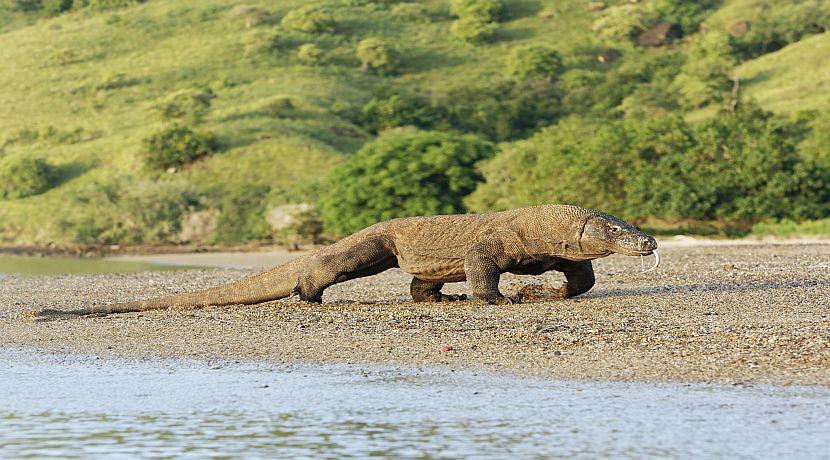As an animal which is shrouded in mystery and often draws many misconceptions about its abilities (perhaps due to its misleading name!), the Komodo Dragon has fascinated people for centuries.
With our incredible new Komodo Dragon Adventure Tour now up and running, we wanted to take this chance to tell you more about the lizards and where they live!
Komodo Dragons are the largest lizards in the world, with the males reaching an average size of 8 to 9 feet and the females 6. Coming in at a weight of around 150 kg, you really wouldn’t want to annoy a Komodo Dragon, but their size isn’t the only reason. Local people call the Komodo Dragon the “ora” or “land crocodile” and this is for good reason. These dragons know how to hunt. The Komodo are carnivores and have a very unique way of killing their prey. First, they will spring up and knock their prey over, causing it to lose balance temporarily. Once the prey is off balance, they attack it using razor sharp serrated teeth - which are in many ways similar to sharks. The dragons rip their prey to pieces, but even if the unfortunate animal escapes, the Komodo Dragon has a backup plan. Once they have bitten their prey it will die within a week from blood poisoning caused by the 50 strains of bacteria present in the Dragons saliva! They then stalk the prey until it finally dies and they get the chance to enjoy their meal. To cut a long story short, you should be thankful you aren’t a Water Buffalo, Deer, Pig or any other animal which makes an appealing meal for a Komodo Dragon!

For an animal so fearsome, the Komodo Dragon is very rare and they are only found on 5 islands: the Lesser Sunda Islands of Komodo, Rinca, Gili Montang and Gili Dasami – all within the Komodo National Park – and the island of Flores where the Komodo are free to roam. These islands are all located in Indonesia.

The lizards have adapted to a wide variety of habitats within the islands and can survive anywhere from tropical dry forests, to a savanna, through to a monsoon forest. The only thing these places have in common is the fact that they are hot and this is what the Komodos love. Once they have found a suitable location to make their territory in, the lizards will either make or find a burrow to nestle down in.
The Komodo Dragon may not be endangered, but it is considered vulnerable on the IUCN Red List. There are estimated to be around 6,000 Dragons left in the wild and they are split across the islands. Seeing a Komodo Dragon in the flesh really is a sight to behold and if you want the chance to see one of these incredible animals then take a look at our new tour! Hopefully this blog has educated you slightly more on these imposing beasts, but we stand by the fact that the best way to further educate yourself is to travel!










